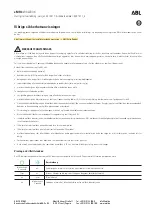
By friction between the gear cone and ring
cone (internal), the ring begins to rotate but
is
by the hub because of keys. In
other words, the ring is at this time twisted,
while the sleeve is advancing further to push the
ring fully against the gear cone, Since the
ring is unable to slide along any further, the
sleeve lets go off the keys and rides over to the
ring. At this moment, the initial contact be-
tween the chamfered ends of teeth of the ring
and those of internal teeth of the sleeve occurs.
This contact is such that the internal teeth of
the sleeve align themselves to those of the ring.
When the sleeve advances and slides into the
ring, the ring will be rotating nearly with the
speed of the gear, so that the sleeve is enabled
smoothly to slide over into the clutch teeth of
the gear.
The initial contactor mesh between sleeve and
ring is determined by the widths of key and slot
or, in other words, the key clearance in the
slot, and is prescribed to extend at least a
third
of the chamfer.
With the synchronizer properly assembled on
the shaft, push in and twist each synchronizer to
see if one-third mesh occurs or not; if not, it
means that the overall wear (which is the sum of
wears of slots, keys and chamfered tooth ends)
is excessive and, in such a case, the entire
synchronizer assembly must be replaced.
Mesh of chamfered tooth
Contact extending
ends of synchronizer ring
about of
and sleeve
fered face from apex
Synchronizer Rings
Inspect each synchronizer ring for wear of its
key slots by measuring width of each slot.
If width reading exceeds limit, replace ring.
Key slot width
of synchronizer
ring
Fig. 73-38
Fork Shaft Locating Springs
If “gears slipping out of mesh” has been com-
plained, check these springs for strength by
measuring their free length, and replace them if
their free lengths are less than service limit.
Spring No.
Free length
Standard
Service limit
25.5 mm
21.0 mm
in.)
(0.826 in.)
Fig. 73-39
13-14
Summary of Contents for Samurai 1986
Page 1: ......
Page 9: ...0 9...
Page 10: ...0 6...
Page 11: ...0 7...
Page 12: ...0 8...
Page 13: ...0 9...
Page 14: ...0 10...
Page 15: ...0 11...
Page 19: ...1 2...
Page 20: ...1 3...
Page 119: ...r a l I 29 Fig 4 1 1 Carburetor exploded view 4 3...
Page 120: ...N Fig 4 l 2 Carburetor cross section 4 4...
Page 154: ......
Page 155: ...T c c x 5 5 3...
Page 347: ...Fig 17 1 34 17 12...
Page 348: ...17 13...
Page 353: ...Fig 17 2 12 17 18...
Page 354: ...17 19...
Page 360: ...Fig 17 3 19 Fig 17 3 20 Fig 17 3 21 5 Fig 17 3 23 Ci Fig 17 3 24 Fig 17 3 22 17 25...
Page 424: ...Fig 19 6 1 19 38 19 6 PARKING BRAKE...
Page 448: ...20 13...
Page 450: ...21 2...
Page 475: ...22 5...
Page 476: ...22 6...
Page 477: ...22 7...
Page 478: ...22 8...
Page 479: ...22 9...
Page 480: ......
Page 481: ......
















































